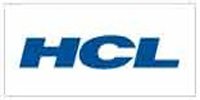CCNA Routing and Switching
Course ObjectivesThe CCNAX is a combination of the ICND1 and the ICND2 class, presenting important networking fundamentals using the Open Systems Interconnect (OSI) seven layer model concepts; terminology and technologies are explained and illustrated using text and graphics animation. The class also focuses on using Cisco Catalyst switches and Cisco routers connected in local-area networks (LANs) and wide-area networks (WANs) typically found at small to medium network sites. Upon completion of this training course, you will be able to select, connect, configure, and troubleshoot the various Cisco networking devices.
Course Content
Fundamentals of Networking
• LAN, WAN, MAN, ISP, Internet, different types of Topologies
• Hub, Switch, Bridge, Router, Firewall etc.
OSI & TCP/IP models
IP Addressing
• Classes A, B, C, D. E , mask designing-dotted decimal & prefix Notation
• Subneting, VLSM or Sub-subneting
• Summarization & Aggregation or Supperneting
Basic CLI Switch & Router configuration
• Hostname
• Mgmt ip address
• IP default-gateway
• Local user and password
• Enable secret password
• Console and VTY logins
• Exec-timeout
• Service password encryption
• Copy run start
• Verification
• Ping, Trace route
• telnet
Switching
• Ethernet Framing – MAC address, P-Type, FCS or CRC etc.
• Switch MAC address learning, MAC table,
• Frame processing behavior of switch
• Frame forwarding behavior of switch
• Frame droping cases by switch
• LAN DESIGN – Flat network design & Hierarchical design
• VLAN, DTP, DOT1Q, Native VLAN
• VTP – server mode, client mode, transparent mode, off mode , VTP pruning
• STP – Port roles, port states, Reconvergence
• RSTP , PVST, PVST+, CST, MST
• Root guard, BPDU guard, BPDU filter
• Etherchannel – PagP, LACP
• Port security, Inter VLAN Routing
• HSRP, VRRP, GLBP
Routing
• Fundamentals of Routing
• Static Routing, Fundamentals of Dynamic Routing protocols
• EIGRP – Neighbor Discovery, Neighbor Table, Topology Table,
• Feasibility criteria, Metric , Load Balancing etc.
• OSPF – Neighbor Discovery, Neighbor Table, LSDP Table, LSA
• OSPF neighbor states, Metric , Load Balancing etc
• Fundamentals of BGP.
Transport Layer
• TCP & UDP protocols
• Port multiplexing, Socket, Flow control, windowing, Error recovery,
• Connection establishment, Connection termination
Access Control List
• Packet filtering, route filtering, Wild mask
• Standard ACL, Extended ACL, Named ACL
NAT & PAT
• Private IP, Public IP, Inside NAT, Outside NATM
• Port Address Translation etc.
IPv6
• IPv6 Fundamentals, Types of IPv6, IPv6 addressing & configuration
WAN Data link layer (L2) Technologies
• HDLC, PPP – Looped Link Detection, Advance Error Control, Multilink support, Authentication-PAP, CHAP
• FRAME RELAY fundamentals, DLCI, Dynamic Map, Static Map etc
If you would like to know complete syllabus of this course please Contact UsContact Us












